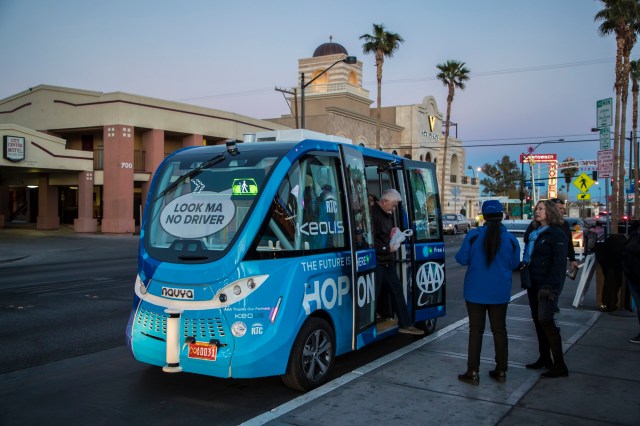Credit: Getty

The excitement surrounding automated vehicle technology is gathering speed. I’ll admit to being pretty excited myself.
However, Christian Wolmar, writing in the Spectator, is having none of it:
“The assumption that this technology will soon transform our lives has been speeded along by gullible journalists who fail to look beyond the extravagant claims of the press releases pouring out of tech companies and auto manufacturers, hailing the imminence of major developments that never seem to materialise.”
Hype is not a substance unknown to tech journalism – and Wolmar’s sceptical take provides much needed balance; however, I think that the title of the piece (quite possibly not of the author’s devising) overstates the case:
“The dream of driverless cars is dying.”
Wolmar argues that the companies (and governments) investing in the new technology have underestimated the technical, commercial and political hurdles that lie ahead. I’ve no doubt that’s true. But it’s a good thing that people don’t fully understand the difficulty of doing difficult things, otherwise they wouldn’t try to do them.
I’ve also no doubt that a lot of investors are going to lose a lot of money in the process. But then that’s what happens with every technological dream that eventually comes true. It’s what happened when road transport went horseless, and it’s what will happen as it goes driverless.
The core of Wolmar’s argument is the difficulty in progressing from basic to advanced levels of automation:
“The world of driverless vehicles is dominated by discussions around the six levels of autonomy. These range from none at all at Level 0 to Level 4, whereby cars drive themselves all the time but passengers retain controls such as pedals and the steering wheel in order to be able to take over when absolutely necessary, and Level 5, at which no human involvement at all is possible.”
Level 3 vehicle automation effectively functions as an autopilot – and, as Wolmar points out, the problem with that is the transfer of control from computer to human, which in a car, could come at any time.
It’s only at Level 4 – where human intervention is only required in exceptional circumstances – that we can talk about truly driverless vehicles. But where are they?
“The reality is that there are no driverless cars anywhere today, not even in Silicon Valley, in the sense of a vehicle that could be left to its own devices to navigate city streets or even an A road.”
If that’s true, then what are we to make of the news that the Chinese company Baidu has begun mass production of its Apolong self-driving minibus? Here’s how the BBC reports the story:
“The Apolong bus can seat up to 14 people, and has been developed with a local vehicle manufacturer…It has no driver’s seat, steering wheel or pedals…It runs on electric power and can travel up to 100km (62 miles) after a two-hour charge, at up to 70km/h.”
No “driver’s seat , steering wheel or pedals” would suggest a very high level of automation. Perhaps closer to level 5 than level 4. That said, the next bit of the BBC’s report suggests an important qualification:
“Baidu envisages it being used for ‘last-mile’ drop-offs within enclosed areas, such as airports and tourist sites.”
The implication is that we can expect to see driverless road vehicles doing their stuff quite soon, but only in carefully controlled environments – and not (for a while, at least) on our public highways.
The crucial question is how extensive these environments prove to be. If confined to airports, business parks and the like, then the near-term impact of driverless vehicles will be correspondingly limited. However, if we start designing new towns and major urban extensions around vehicles like the Apolong, then driverless, trackless transit (which would thus be much cheaper and more flexible than existing options) could have a transformative impact.
Already crowded countries like the United Kingdom, face huge demands for new housing over the next 20 years. The opportunity to accommodate millions of new homes without also having to accommodate millions of extra cars and millions of extra parking spaces is of game-changing significance.
Not everyone will like the idea of living in a driverless neighbourhood, of course. But as we’re talking about new not established communities, one can avoid the driverless future by not moving into it.










Join the discussion
Join like minded readers that support our journalism by becoming a paid subscriber
To join the discussion in the comments, become a paid subscriber.
Join like minded readers that support our journalism, read unlimited articles and enjoy other subscriber-only benefits.
Subscribe